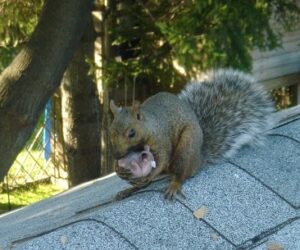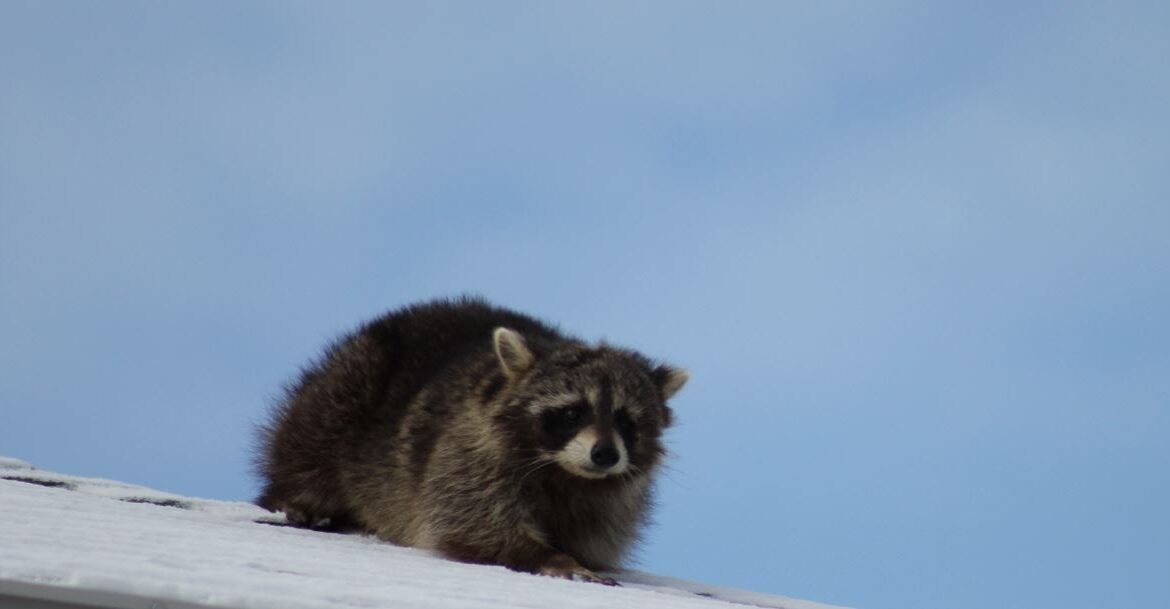Do you hear a thumping or a scraping sound on your roof? Unless you believe in Santa Claus, this sound is probably coming from a wildlife intruder. Raccoons, squirrels and even mice can climb on roofs and attempt to enter attic spaces through soffit gaps, fascia, chimneys and roof vents. Find out why wild animals do this, how quickly it can damage your home and where you should turn for effective, humane animal removal.
Common Paths to Your Roof
 Many creatures are surprisingly resourceful when looking for a comfortable place to call home. Your attic space is a cozy, protective area for raccoons and squirrels to sleep, store their food or have a litter of babies. For animals used to holes in the ground and hollows in trees, your attic is like their personal mansion.
Many creatures are surprisingly resourceful when looking for a comfortable place to call home. Your attic space is a cozy, protective area for raccoons and squirrels to sleep, store their food or have a litter of babies. For animals used to holes in the ground and hollows in trees, your attic is like their personal mansion.
A common tactic to enter your attic is to climb on your roof. Once there, raccoons and squirrels will push through soffits, enter through roof vents or even claw through shingles to create their own entry hole.
How does wildlife climb up on a roof, to begin with? There are a few tactics that these clever critters use to get on top of your house:
- Gutter downspouts
- Vines on your home
- Nearby electric lines
- Overhanging tree branches
- Climbing brick walls
Gutters are a common option. Downspouts typically have corrugated sides, which are easy for raccoons and squirrels to grab on to. Climbing directly up the side of a downspout is an easy way to reach your soffits which provides easy access to your roof and attic.
Vines on the side of a brick building may look beautiful, but they also make excellent climbing nets for squirrels and raccoons. Consider pruning or completely removing vines from the side of your building. Not only does this prevent animals from climbing onto your roof, but clinging plants may actually be damaging your siding.
Electric lines are an easy access route. Unfortunately, there’s not a lot you can do to prevent squirrels from climbing nearby electric lines. If the electric pole is on your property, a squirrel guard or other material wrapped around the bottom few feet of the pole may be able to dissuade these determined climbers. Use caution around electric poles and consider asking a professional to properly install a squirrel guard.
Trees are the natural playground of squirrels, so any nearby branches are an open invitation for these furry creatures to climb around on your rooftop. Have a professional trim back any branches that are within 6 feet of your roof. This should prevent would-be intruders from making the leap from a branch to your home.
Dangers of Animals on Your Roof
What’s the big deal about animals on your roof? Squirrels and raccoons are incredibly resourceful creatures. Once on your roof, these wild animals can feel the heat coming from your home, and usually follow scents from your kitchen, and with that determination can often find a way into your attic. An attic-dwelling wild animal is a danger to your health and to your home.
First, raccoons and squirrels can carry diseases. Raccoons often carry roundworm. They can also be infected with giardiasis, leptospirosis, rabies or salmonella. These diseases and parasites can be spread through raccoon feces, which may be scattered all over your attic if you let a raccoon set up a home in this space.
Raccoons and squirrels are also known to find enclosed hiding spaces to have a litter. Squirrels have two breeding seasons and can have as many as nine babies in each litter. Tiny critters filling up your attic are not only a nuisance but make the safe and humane removal process more involved.
Finally, wild animals in your attic can cause thousands of dollars in-home repairs. Chewed shingles, damaged wires, compromised insulation and other damages can leave you with an intimidating repair bill, or worse, fire hazards. Prevention is far more affordable than having to evict these tenants and restore your home’s roof and attic.
Contact Skedaddle Today
At Skedaddle Humane Wildlife Control, we have the tips and tricks you need to prevent wildlife from climbing on your roof. Or, if it’s too late and you’re already hearing tiny feet clambering around up there, don’t hesitate to contact us. We have the humane wildlife removal experience necessary to safely remove those pesky squirrels and raccoons. Restore your roof without harming the local wildlife population with the help of our trained professionals in your local community.





